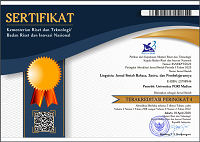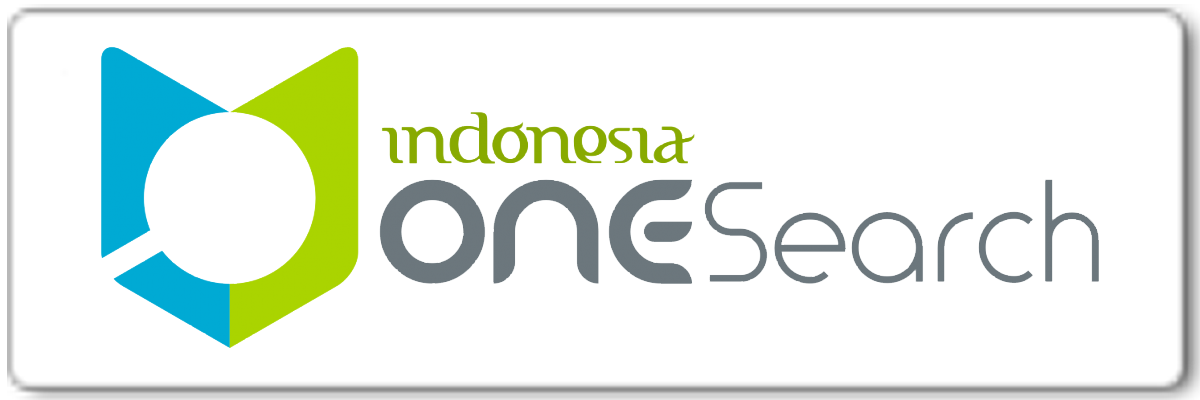Using smart strategy to improve the tenth graders’ reading comprehension achievement in an ESP class
Abstract
This study aims to find out how well SMART Strategy improves the tenth graders' reading comprehension achievement in ESP at Cendekia Vocational High School Madiun. The subjects of this study consisted of 30 students of tenth graders majoring in Multimedia. In conducting this research, researchers used Classroom Action Research. The researcher used the SMART (Self-Monitoring Approach Reading and Thinking) strategy in teaching ESP texts. This research was conducted by following the steps of action research: planning, action, observation, and reflection. This research was conducted in three cycles. Each cycle consists of two meetings. Data obtained through tests, observation sheets, field notes and documentation. The results of this study indicate that there is an increase in students' ability to understand reading ESP texts by using the SMART strategy. Most students get good grades in the second cycle. The minimum passing criteria for English subject is 75. The students' average score on the pre-test was 57.17. The average score of students in post-test I was 67, the average score of students in post-test II was 78.67. Then the average value of post-test 3 increased 87.33 this shows that in cycle I there were 40% of students who achieved KKM and increased in cycle II to 77% of students who achieved KKM and in cycle III reached 100%. Its means the research has reached the criteria of success 100% where 30 students passed the reading comprehension test. Therefore, it can be concluded that the SMART strategy was able to improve the reading comprehension
References
Anderson, M. (2003). Text Types in English 2. South:Yarra: Macmillan.
Algeo, J.(2010). The Origins and Development of the English Language: Sixth Edition, Boston: Wadsworth Cengage Learning.
Anita, B.R., &, Arindra, T.W.,(2019) Pengembangan Bahan Ajar ESP-Reading Comprehension Berbasis Audio Video Untuk Siswa Sekolah Menengah Kejujuran Teknik Otomotif, Jurnal Pendididkan dan Pembelajaran,(2),12-26 Retrieved from (https://journal.stkipnganjuk.ac.id/index.php/jdp/article/view/5).
Brokenshire, M.A. (2014), Using Self -Monitoring Strategy Instruction to Improve Reading Comprehension in High School Students with Learning Disabilities.Rowan Digital Works.
Brown, (2004). Language Assessment: Principles and Classroom Practices. NewYork: Pearson Education.
Crystal, D. (2003). English as a Global Language. New York. Cambridge University Press.
Feng, L (2010). Shot Analysis of the Nature of Reading Canadian Center of Science and Education English Language Teaching, (3) .152-15.
Grebe,W (2009). Reading in a Second Language: Moving from Theory to Practice. New York: Cambridge University Press.
Grabe and Stoller,(2002). Teaching and Researching Reading, Britain: Pearson Education.
Hafner, L. E., & Jolly, H. B. (1982). Teaching reading to children. Macmillan ; Collier Macmillan. http://catalog.hathitrust.org/api/volumes/oclc/7274515.html.
Klingner, J. K., Vaughn, S., dan Boardman, A. (2007). Teaching Reading Comprehension Students with Learning Difficulties. New York: The Guilford Press.
Linse, C. (2005). Practical English Language Teaching Young Learners. New York: McGraw Hill.
Mason, L. et al. (2012). Highlights in Reading Comprehension Intervention Research for Students with Learning Disabilities. From: International Encyclopedia of Education (Third Edition), 2010. Retrieved from (https://www.sciencedirect.com/topics/socialsciences/reading- comprehension).
Murtono. (2015). Cooperative Learning Model toward a Reading Comprehensions on the Elementary School. Journal of Education and Practice, 6 (18), 208–215. Retrieved from http://search.proquest.com/docview/1773219246?accountid=8330.
Miller, W. H. (2000). Reading Comprehension Activities KIT. Centre for Applied
Research Nunan, D. (2003). Practical English Language Teaching. New York: Mc.Graw Hill.
Richards J.C., and Will A. Renandya. 2002. Methodology in Language Teaching. New York: Cambrige University Press.
Snow, C.E. (2010). Reading Comprehension: Reading for Learning. C.E. Snow, in International Encyclopedia of Education (Third Edition), 2010 Retrieved from (https://www.sciencedirect.com/topics/social-sciences/reading-comprehension)
Patel, M. F. & Jain, Praveen M. 2008. ENGLISH Language Teaching. Jaipur: Sunrise Publisher & Distributors.
Purcell-Gates, V., Duke, N. K., & Stouffer, J. (2016). Teaching literacy: Reading. In D. H.Gitomer & C. A. Bell (Eds.), The AERA handbook of research on teaching. American Educational Research Association, 5 (2), 1217–1267.
Scott, W.A. and Ytreberg, L.H. (2003) Teaching English to Children. New York: Longman.
Snow, C. (2002). Reading for understanding: toward a research development program in reading comprehension. Pittsburgh: RAND.
Suryaningsih, R. (2014) The Effectiveness Of Self-Monitoring Approach to Reading and Thinking(Smart) To Teach ReadingViewed From Students’ Reading Anxiety.TEFLIN International Conference.763-766.
Syafi’i, M.L. (2015). Smart Strategy to Boost Students’ Reading Comprehension JEELS.
Tristiana, N.E., Hartono, R., Faridi, A., Fitriati, S.W. (2022). Implementation Project Based Learning in teaching English for Specific Purpose courses during the Covid-19 pandemic. National Seminar Proceedings Postgraduate, 802-807.
Vaughn, S., Klingner, J. K., & Bryant, D. P. (2001). Collaborative strategic reading as a means to enhance peer-mediated instruction for reading comprehension and content-area learning. Remedial and Special Education, 22(2), 66-74. Retrieved from http://journals.sagepub.com/home/rse.
Wahyuni, S. (2012) Qualitative Research Method Theory and Practice (2nd Ed) Salemba Empat
Article Metrics
Abstract has been read : 1 timesDOI: http://doi.org/10.25273/linguista.v7i1.19466
Refbacks
- There are currently no refbacks.
Linguista: Jurnal Ilmiah Bahasa, Sastra, dan Pembelajarannya indexed by:
View My Stats








